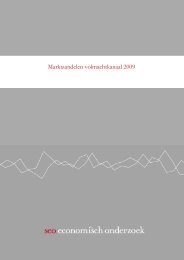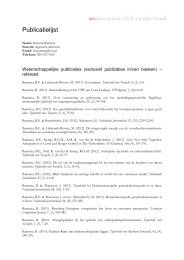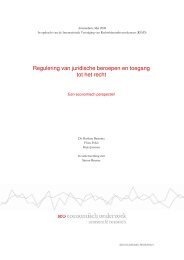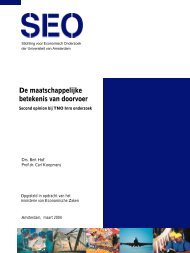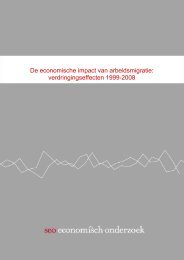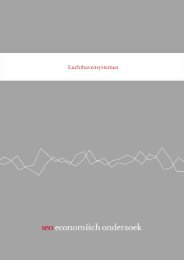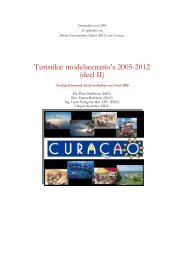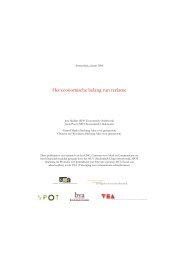Amsterdam, Netherlands - SEO Economisch Onderzoek
Amsterdam, Netherlands - SEO Economisch Onderzoek
Amsterdam, Netherlands - SEO Economisch Onderzoek
Create successful ePaper yourself
Turn your PDF publications into a flip-book with our unique Google optimized e-Paper software.
Box 7-2: Four futures for EuropeDe Mooij en Tang (2004) have developed four scenarios for the future development of the internationaleconomy. These scenario’s provide a structure for discussing the way forward in the <strong>Amsterdam</strong>metropolitan area in a comprehensive framework. The key variables for the scenario’s are shown in thefigure below. Depending on the degree of cooperation in the international arena and the degree ofcompetitiveness in the international economy, four quadrants can be isolated.This report focuses on Global Economy and Regional Communities as the two scenario’s which bestrepresent two distinct futures: one in which public responsibilities are leading and one which strongly leanson private responsibilities.Global Economy: Economic integration in this scenario is broad and global. As countries find it in theirmutual interest, the new WTO round succeeds and economic integration in an enlarging European Unionintensifies. The problem of climate change intensifies. National institutions become increasingly based onprivate initiatives and market-based solutions. European governments concentrate on their core tasks, suchas the provision of pure public goods and the protection of property rights. They engage less in incomeredistribution (not only between rich and poor but also between young and old) and public insurance.Incomes become more unequal, but grow relatively fast on average. Besides, social-economic mobility ishigh.Regional communities: In this scenario, the world is fragmented into a number of trade blocks, andmultilateral cooperation is modest. European countries rely on collective arrangements to maintain anequitable distribution of welfare and to control local environmental problems. At the same time,governments in this scenario are unsuccessful in modernizing welfare-state arrangements. A strong lobbyof vested interests blocks reforms in various areas. Together with an expanding public sector, thisdevelopment puts a severe strain on European economies.Source: De Mooij and Tang (2004)7.4.3 The action plan linked to the regional communities scenarioThe strategies to be based on the two scenarios are organized as follows. Regional communitiesfocuses on public leadership as the main driver for action. It requires the stakeholders in the<strong>Amsterdam</strong> metropolitan area to cooperate much more closely than is currently the case. Publicleadership is needed to achieve this. The increased cooperation will result in a joint innovationstrategy for the whole metropolitan area. Also the governance system is ‘rationalized’ in order toincrease the ‘focus and mass’ of innovation programs. This means that the region is making clearchoices concerning the key economic clusters to be supported by the joint regional innovationprogram (backing or picking winners). The funds needed for the execution of this program areraised from both public and private sources. The extra public funds are needed to stimulate anincreased effort from private investors. After all, the supposition of this scenario is that capital134



